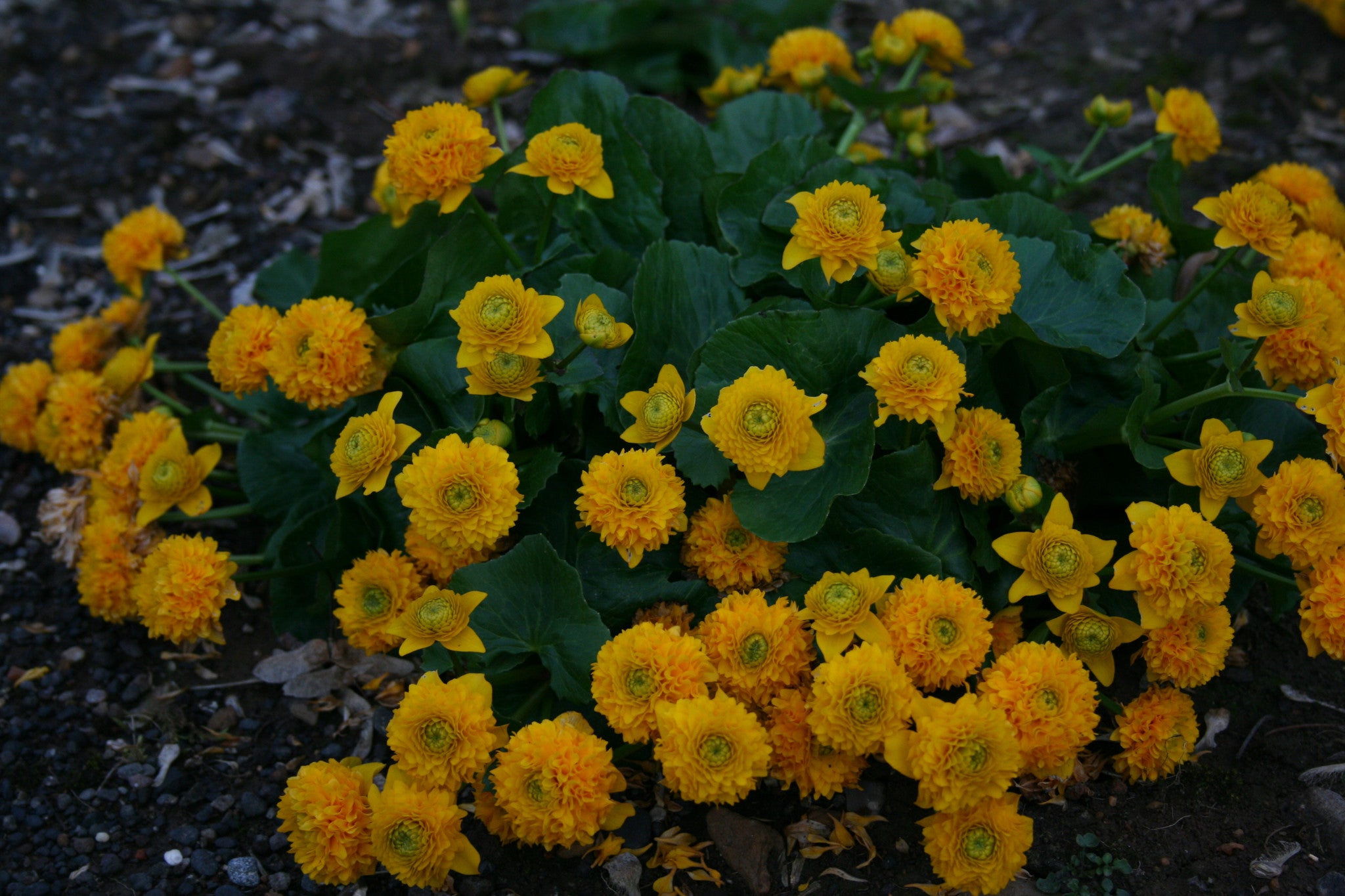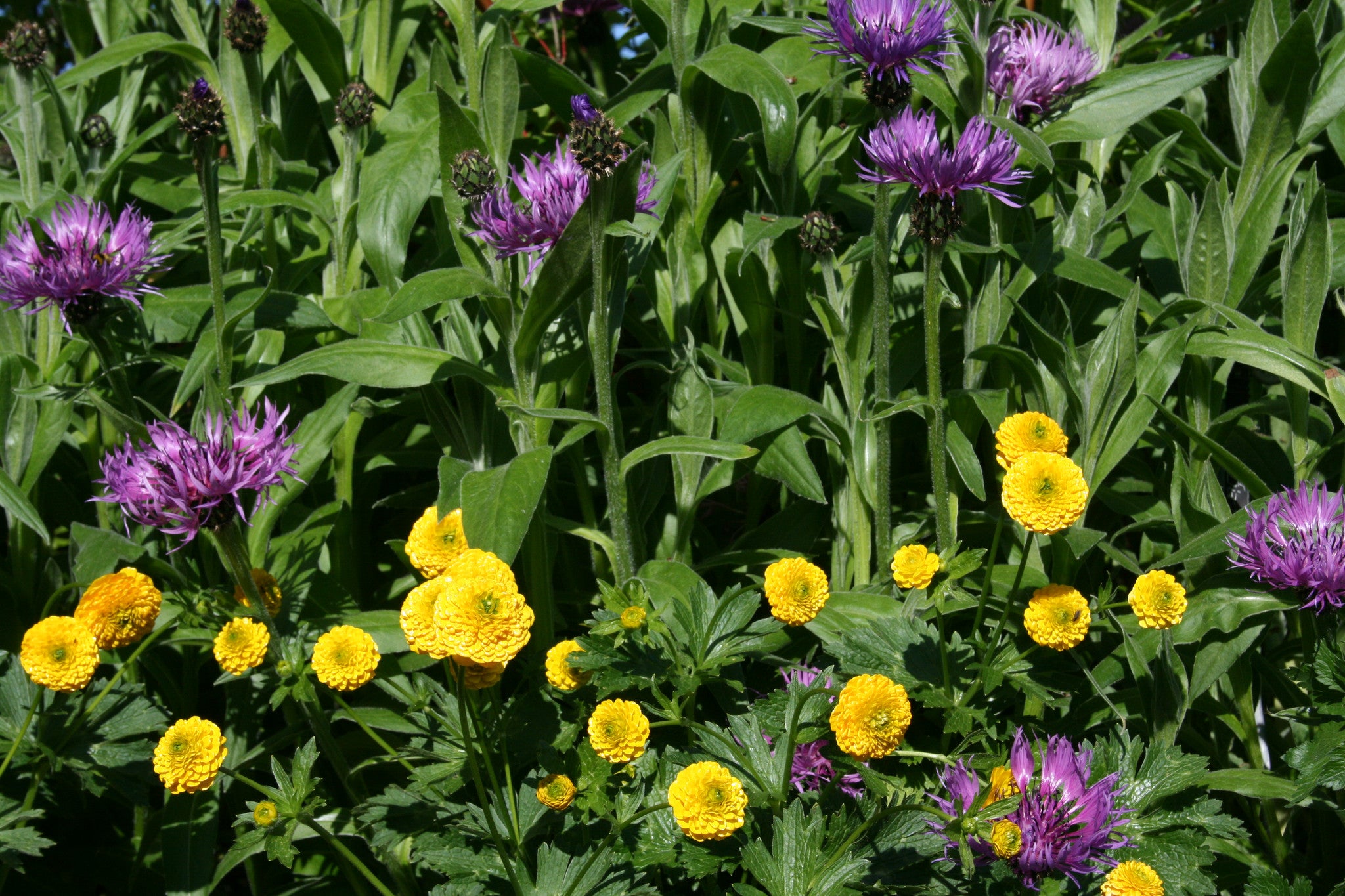Caltha palustris 'Flore Pleno' (d)
Approx. 0.5 litre pot
About this cultivar:
Caltha palustris 'Flore Pleno' (d) is a double version of the palustris species. It has an Award of Garden Merit from the Royal Horticultural Society and I am not surprised. Grows almost anywhere that is wet enough and looks great almost anywhere. Try it with Centaurea like in the photo here.
- Position: Full sun, partial shade
- Soil: Almost any soil, wet soil, grows well in Ballyrobert!
- Flowers: April, May, June
- Other features: Cut Flowers or Dried Flowers, Great Ground Cover, Grows well in Ballyrobert, Waterlogged, Royal Horticultural Society Award of Garden Merit (RHS AGM)
- Hardiness: Fully hardy - grows well in Ballyrobert!
- Habit: Clump forming
- Foliage: Deciduous
- Height: 30 - 45 cm (1 - 1.5 ft)
- Spread: 30 - 45 cm (1 - 1.5 ft)
- Time to full growth: 2 to 5 years
- Plant type: Herbaceous Perennial
- Colour: Yellow, green
-
Goes well with: Ponds, damp areas, Iris, Knifophia
About this genus:
Caltha is a genus of rhizomatous perennial flowering plants in the family Ranunculaceae ("buttercup family"), native to wet areas in temperate and cold regions of both the Northern and Southern Hemispheres. Caltha is the Latin term for marigold; it in turn derives from a Greek word for a basket or bowl, in reference the shape of the flowers. Their leaves are generally heart-shaped or kidney-shaped. There are 10 species in the genus - but for all intents and purposes when gardening we are talking about the species Caltha palustris.
Caltha palustris has quite a variety of common names, varying by geographical region. These include marsh marigold, kingcup, mayflower, May blobs, mollyblobs, pollyblobs, horse blob, water blobs, water bubbles, gollins, balfae (in Caithness) and ,the publican. The common name of marigold refers to its use in medieval churches at Easter as a tribute to the Virgin Mary, as in Mary gold. The specific name palustris, Latin for "of the marsh", indicates its common habitat.
Clash palustris is native to marshes, fens, ditches and wet woodland in temperate regions of the Northern Hemisphere. It becomes most luxuriant in partial shade, but is rare on peat. In the United Kingdom, it is probably one of the most ancient native plants, surviving the glaciations and flourishing after the last retreat of the ice, in a landscape inundated with glacial meltwaters.
It is sometimes considered a weed in clay-like garden soils. I think this is a bit far fetched - it does well but does't take over. In warm free-draining soils, it simply dies away.
Richard Mabey, in Flora Britannica, describes Caltha palustris thus:
"Marsh-marigolds are in decline as agricultural land continues to be drained, but they are still the most three-dimensional of plants, their fleshy leaves and shiny petals impervious to wind and snow, and standing in sharp relief against the tousled brown of frostbitten grasses. Most of the plant's surviving local names - water-blobs, molly-blobs, water-bubbles - reflect this solidity, especially the splendid, rotund 'the publican' from Lancashire."
How about another Caltha quote. This time from Shakespeare:
Winking Marybuds begin
To open their golden eyes (Cymbeline, ii. 3).
In the garden they are versatile: they look great in large patches and in nooks and crannies, beside ponds and in formal-isn beds. try them in front of Iris and Knifophia.




